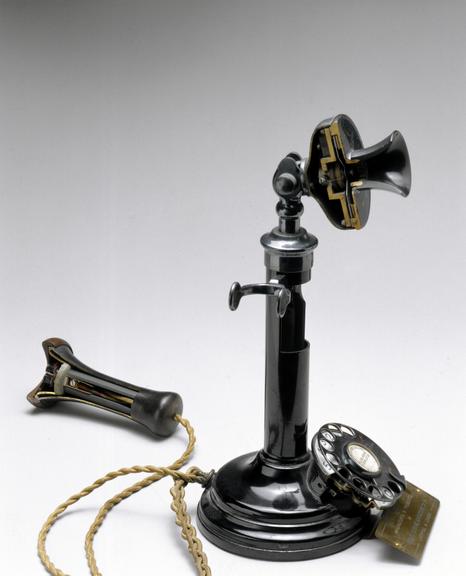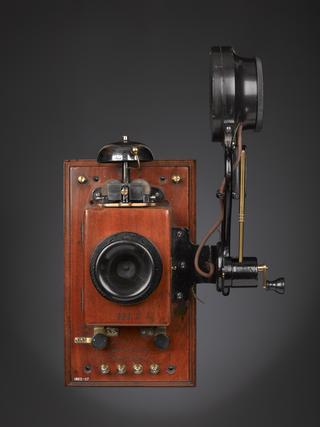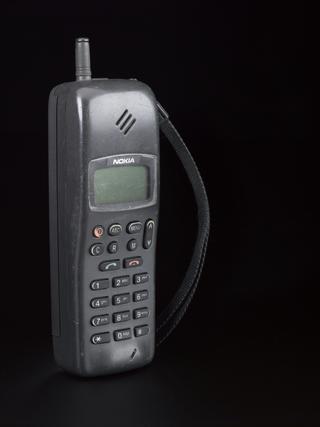
Desk telephone transmitter and receiver (sectioned), 1926.








Sectioned desk telephone transmitter and receiver, made by the Automatic Telephone Manufacturing Company, Edge Hill, Liverpool, England, 1926.
Candlestick telephones like this one were familiar and popular throughout the 1920s and 1930s. It had a 'solid black' transmitter, where the carbon granules were contained in a small brass cylinder, which was connected to the diaphragm at one end. This type of transmitter worked better when it was nearly upright, hence the design of the telephone. It required a separate bell set.
Details
- Category:
- Telecommunications
- Object Number:
- 1926-482
- Materials:
- brass (copper, zinc alloy), copper (alloy), metal (unknown) and enamel
- Measurements:
-
overall: 320 mm x 155 mm x 210 mm, 2.51 kg
- type:
- telephone
- credit:
- Donated by the Automatic Telephone Manufacturing Company




